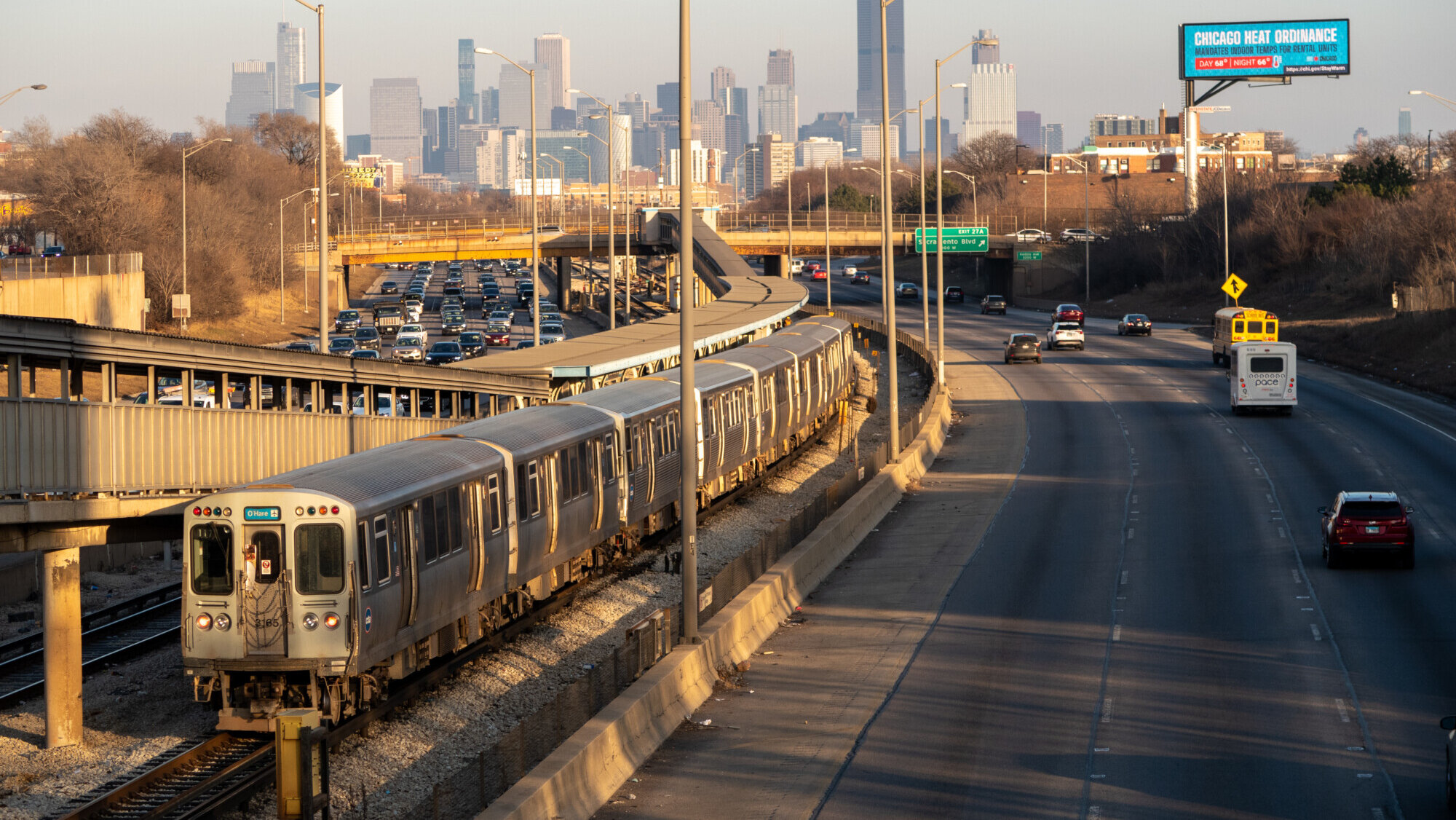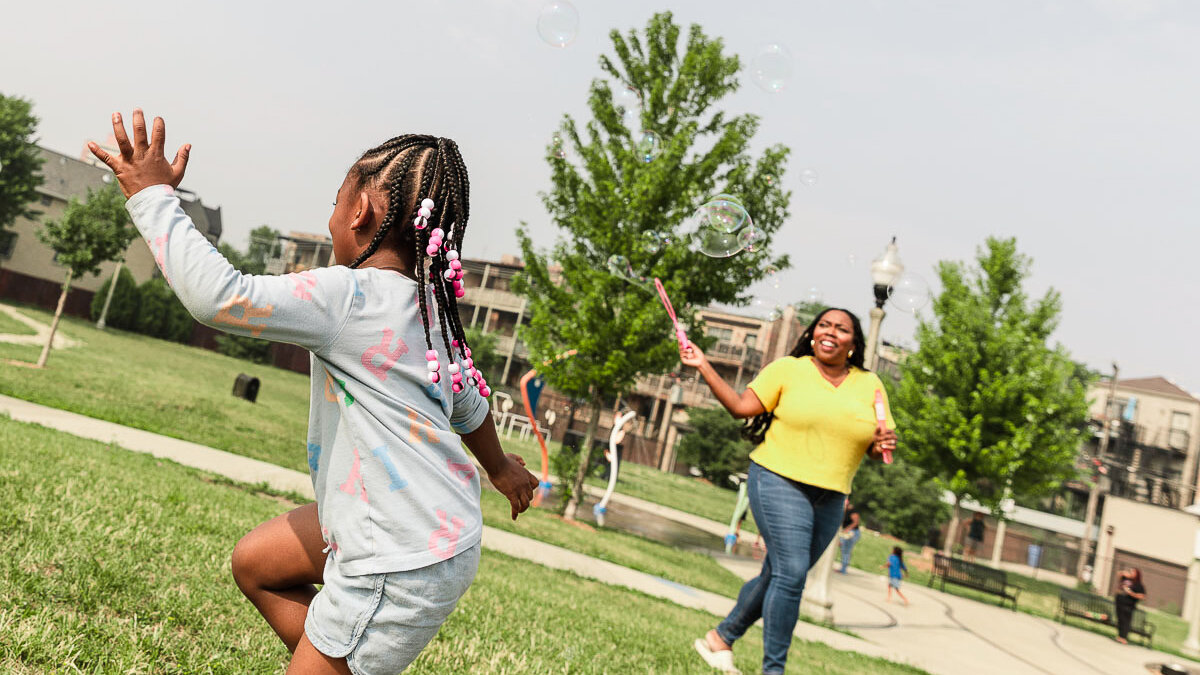Reconnecting Communities
Mitigating Community Harms of Transportation Infrastructure

Many of us are used to traveling through our region, driving on our highways, riding on trains and buses, with little thought for the impact that transportation infrastructure has on the residents that live nearby. Elevated structures like the Skyway put distance between us and our neighbors. Trenches like I-290 narrow our perspective.
Metropolitan Planning Council’s (MPC) Reconnecting Communities Report aims to shake us out of that complacency. This new report documents the equity and environmental harms caused by transportation infrastructure in human terms: thousands of homes bulldozed, thousands of residents displaced, and higher levels of auto-related pollution, noise and poor health outcomes that persist to this day. More than a retrospective, Reconnecting Communities engages residents at the level of their lived experience to generate community-led ideas designed to reverse the damage done.
With the 2022 announcement of the Reconnecting Communities grant program, the Federal Government officially recognized for the first time that transportation infrastructure built in the past has negatively impacted communities, creating segregation, harming health, and creating environmental and social injustice. The program looks not only to acknowledge damage caused but to provide resources to mitigate or reverse the harms of the past and enable a reconnected future. The program represents an historic moment, a rare opportunity to redress the mistakes of the past. It is a call to action.

Read the Report
In an effort to prepare our region for the U.S. Department of Transportation’s Reconnecting Communities grant opportunities, the Metropolitan Planning Council conducted research documenting the equity and environmental harm that transportation infrastructure has historically caused in our region. Community engagement helped identify potential projects to mitigate those harms. We received over 120 community-generated project ideas, ranging from highway caps to complete streets to parks. This report compiles a list of the top 22 project ideas to reconnect communities disrupted by transportation infrastructure.
New focus and resources to address historic harms
In the 1950s and 1960s, the Federal Government built highways through many major U.S. cities to provide connections to the suburbs under development. This caused massive displacement in cities. While residents of neighborhoods living nearby massive interstate highways have experienced negative impacts for decades, few actions have been taken to remediate the issues. The Federal Reconnecting Communities Pilot Grant program announced in 2022, allocates $50 million for planning projects and $150 million for capital construction annually over 5 years to address just this issue. The grant program prioritizes vulnerable communities that have experienced historic harm and requests active participation and involvement of community-based organizations in this process.
Identifying community-based solutions
In an effort to prepare our region for this opportunity, MPC conducted research compiling the historical harms from transportation infrastructure in our region. To center the discussion on community-based solutions, MPC developed a web-based engagement tool that allowed anyone in the region to point out infrastructure barriers in their communities and propose project ideas to remediate those harms. Via the tool, 120 solutions were documented in the locations shown below.

As expected, the results showed clusters of project ideas adjacent to major transportation infrastructure presenting a community barrier, especially along the Eisenhower, Dan Ryan and Skyway expressways.
Prioritizing solutions
Using prioritization criteria based on the federal Reconnecting Communities Notice of Funding Opportunity (NOFO), our team prioritized the project the community suggestions based on equity and environmental justice, mobility and community connectivity, and equitable development. While suggestions were collected throughout the region, emphasis on environmental justice and on transportation disadvantaged communities ultimately prioritized projects in Chicago.
Solutions range from simple to complex
When we think about reconnecting communities, we might imagine highway capping or highway removal to remediate the issue. While some solutions like those were suggested, there was huge demand to address basic needs such as improving the ability to bike and walk along high-volume arterial roads. In fact, more than half of project suggestions were for Complete Streets.
Other solutions included highway capping, underpass parks, and new or improved transit stations. Chinatown is a notable example of a community bisected multiple times, not only by highways but also by freight rail infrastructure.

Complete Street features and lightning, simple but effective
Complete Street or Road Diet projects incorporate design elements that can help lower driving speeds without enforcement, increase space for pedestrians and cyclists and increase the speed of buses, resulting in better connected communities.
For viaducts like the one above in Chinatown, even though communities would prefer not to have this barrier between them, they would welcome simple interventions such as traffic calming features, better lightning, and art within the viaducts to improve how they experience traversing this massive structure.
What is next?
In the inaugural year of this grant, USDOT received over 400 applications across the country, including one from Chicago for improvements along the Eisenhower expressway, which was informed by the MPC Reconnecting Communities Report. While 45 projects and $185 million were awarded, unfortunately, the Chicago application was not successful. Nearly half of the proposals were highway caps, tunnels, or decks. One-quarter of the projects were related to highway removal, while the rest were distributed between Complete Streets, transit infrastructure, and pedestrian and bike infrastructure.
There will be four more opportunities for our region to apply for the Reconnecting Communities grant, and there are also many other sources of federal and state funding that should be pursued. This portfolio of community-generated project ideas shows the direction of investments that communities want and need. We need to take a whole new approach to build the next generation of transportation infrastructure, with community livability at the center.

